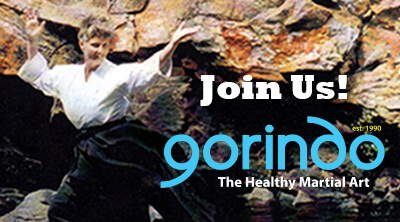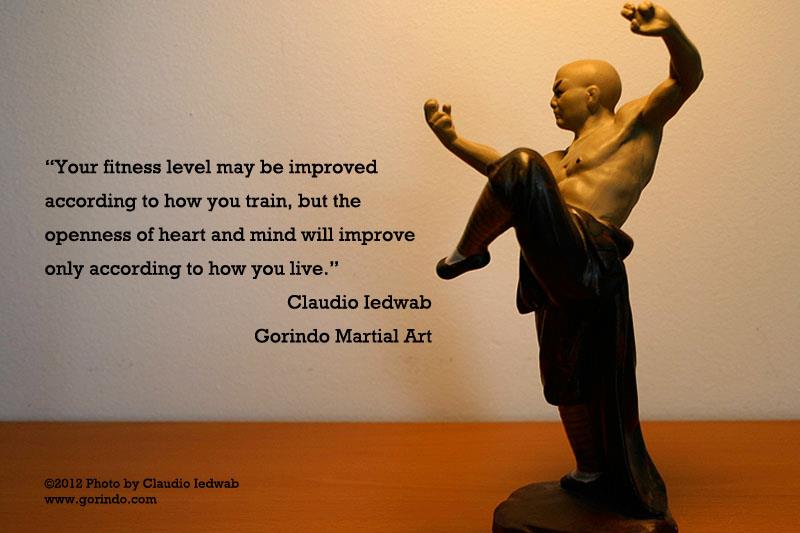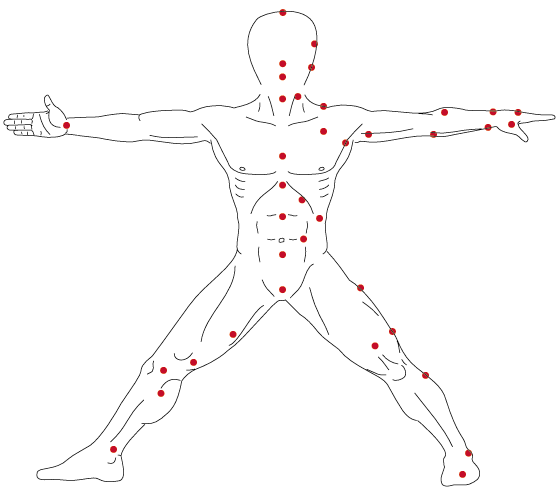Older to start?
I'm a little bit older but still interested in starting martial arts. My doctor says I need more exercise but I'm worried about my back. Any comments?
Many modern exercise systems can lead to overdevelopment in one area of the body to the neglect of others, and this can throw our alignment out of true. Bodybuilding, and spot exercises that focus only on attractive muscular appearance, can interfere with flexibility and be a source of repetitive stress injury. Those who have become obsessed with a flat stomach and purchased the latest abdominal exercise contraption can throw their necks or backs out of alignment due to a lack of muscular support, or aggravate problems with discs or vertebrae because of grinding or twisting in bad positions. This is most unfortunate for those who are just beginning an exercise program and have a genuine interest in getting in shape. The tendency to want to make up quickly for a long period of inactivity contributes to failure. It is important to understand how interconnected the body's muscles, bones, ligaments, and tendons are, and how to train them and correct weaknesses in a gradual way.
Sedentary people have usually let their abdomens sag, and developed lower back pain because the stronger muscles of the back have contracted and tilted the pelvis down and back. Those who are more active, especially runners and cyclists for example, may feel they lack flexibility in their lower back while stretching, when in fact it is the hamstring muscles of the legs that are too tight, inhibiting the ability to bend over to touch the ground. Alignment of the pelvis and hips can often be thrown out of whack by the psoas muscles, which run from the top front of the leg through the hip to the sacrum at the base of the spine. Any of these situations can cause back or neck pain, spinal degeneration, and inhibit mobility, but are technically not conditions of the spine at all. However, long-term imbalance and misalignment can indeed cause serious problems in the spine if not addressed.
In the Eastern modality of medicine, most treatment therapies begin with regaining the proper alignment of the spine, and many methods are used to achieve this. Shiatsu (digital pressure massage) and sotai (gentle manipulation and natural exercise), for example, seek to unlock tension, rebalance the arrangement of muscles and bones, and stimulate vital energy that can aid in healing and supporting the active healthy state. Acupuncture and acupressure also work from the body's natural strengths.
Although martial training is about self-defense and prevention of injury, and does not primarily seek to be a healing art, it can be helpful in the process of recovery from injury after professional diagnosis and treatment. Because martial training incorporates evaluation and self-awareness as well as the feedback of a teacher, it blends particularly well with Eastern health practices. Their emphasis is on the body, mind, and spirit of the whole person as the basis of health, rather than the "treat the illness" point of view often found in Western medicine. Many of the modern alternative movement therapies, such as those of Feldenkrais (himself a judoka, the first black belt of Europe), borrow the simple basic exercises found in martial art training and use them, (sometimes slowed or modified for hands-on manipulation), as treatments for illness or injury.
Martial art training can be recommended as an exercise program because of its supervised, progressive approach, emphasizing good technique and correct body position. Patience, discipline, and an ability to maintain focus in the present moment assist greatly in achieving the benefits of the martial arts exercise regimen. In other sports or activities, participants can become discouraged or forced to quit if the goal orientation or competitive atmosphere does not allow for individual progress within the group. It is important that the teacher be able to assist students in evaluating what is happening with their bodies during the training process.






